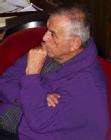graetz: 4R217 (4 R 217); Musica - Tube count
graetz: 4R217 (4 R 217); Musica - Tube count

The data sheet lists 6 valves/tubes for this model; however, the rear panel identifies 7 rohren - with the abbreviation referring to the rectifier. Is the rectifier a solid state device OR is it another tube?
Respectfully,
Robert
To thank the Author because you find the post helpful or well done.
Tube line up, number of circuits
Good question: The plan number 3391 for the Musica 4R/217 shows clearly 6 tubes, the rear panel indeed 7 tubes. It might be that the first series had a rectifier tube instead of the solid state rectifier shown in this plan. The chassis shows an empty hole which could fit an other tube.
We would have to dig deeper to find out than I can.
In any case: the number of tuned FM circuits is 11 on the plan but 10 on the rear panel. You might even get a smaller count!
Perhaps Hans M. Knoll can tell us more - or Jens Dehne who is a Graetz collector?
Possibly Heinz Hermann Luks knows the owner of the pictures he has uploaded with selection "not from my collection". But we are pretty sure that his photos show a 6 tube model.
The change history does not tell us new facts and no catalog is given as reference for this Graetz from 1956.
Since we have a difference in tube number plus in FM circuits between back panel and schematic I'm prety sure that we ought to have to model variants. But first we must have more evidance.
To thank the Author because you find the post helpful or well done.

Hello Robert, hello Mr. Erb
Numbering system of the tubes and circuits at radios
In the transition time in the tubes as rectifiers and dry-plate rectifiers according to model in use gives it were cases in those ones some models or copies with tube or dry-plate rectifier were equipped.
The industry and the distributor were always endeavored to be able to declare high numbers.
It was where it is a question of tubes as a number, a rectifying valve now a tube.
Replaced we it with a semiconductor, the function keeps on receiving, but the number of items goes back around 1 piece. Therefore most manufacturers simply included the semiconductor (Dry-plate rectifier) as a tube.
Here with the model of 1956 however not the case is. The company Graetz says in the company documents: 7 tubes (inclusively selenium rectifier) what is therefore correct.
That the selenium is been actually no tube left open.
In the year 1960 agreements of the radio industry were allowed to indicate tube effective the secondary functions not more than. At 1960th model Music 916 stand therefore now: 8 Roe + Tgl.
As a proof a departure the original company writing to the Musica 4R_ 217 there is the selenium indeed in () mentions, however with counted.
In the catalog of the VDRG Verband the radio wholesaler, a work financed by the association, became in the constant quarrel with the manufacturers, a numbering system uses every device of every manufacturer comparably with that one becomes.
In the sixties an obligatory guideline in which of course was controlled was created by the association of the radio industry something is a tube, a tube function, a circle the a function in the sense of receive power represents.
That is an endless history. A trap the a frequency suppresses that from the radio or FS device has given not to do anything actually with reception improvement. A trap in the ZF of a TV- device or a 9 and/or 5 Khz- filter (Barrier), however, very presumably.
I mean, for so long here in the RMorg, no professionally flawless discussion about the effects and function of oscillatory circuits, very now where they are inserted is led, the topic remains what yes frequently already was shown open and will not be to be answered expertly.
.
Hans M. Knoll 


To thank the Author because you find the post helpful or well done.
One chassis for several models

Dear colleagues,
a comprehensive answer from Mr. Knoll, thank you!
Last open remark from Ernest is the present chassis hole for fixing another tube socket. Here we must know that companies like Graetz, Grundig... uses one chassis for several models to lower cost of manufacture.
The top-line model from 1955/56, Graetz named it Sinfonia 4R/221, has one additional IF stage (one more EF89 and IF filter) which occupies the not used holes between mains transformer and FM front end.

Regards, Bernhard
To thank the Author because you find the post helpful or well done.
Naming sources and reasons; tube count; circuit count
1
Most essential:
We will always find differences between different sources - even if those information come from the (same) maker - as seen above.
If we tell only a part of the story we will always face model change suggests and discussions.
We have to cope for all different versions like model names, number of circuits, tubes or tube counts. But most essential: We have always to declare the source and to compare with the other sources. This has not been done here for Graetz.
For instance Musica 1955 and Musica 1956:
Initially I have entered those models on the basis of the "Handbuch 1955/56" with that name: "Musica" as ID = 1759
and for 1956/57 "Musica" was ID = 1773
Since this arrived to two equal names for a different model I had to add in the variation field 1955 and 1956.
Much later I was told by Walter Wiesmüller that according to the Lange schematics book there is "also" a model Musica 4R217 now ID = 25327 and Musica 4R417, now ID = 25328. I was then not critical enough to recognize this as a doublet. And nobody did ...
Just because Hans M. Knoll showed us the catalog entry I analyzed the story ...
This is a clear example why it is necessary to tell in the notes the different names from different sources including schematic (3391).
Before we change something I would like to discuss this with Jens Dehne because I want to do an example model for this interesting case.
This will not be before next week.
2
Our tube count (and tube line up) is done independently to different customs in different times and countries/makers.
The rules are clear. In this example (Musica 4R217, 3391) we have 6 tubes as number and we have to tell why 7 are given in the catalog - and we should list the rectifier to make it clearer.
3
Count of tuned circuits
On a telephone conversation with Hans M. Knoll of today we agreed that the count of tuned circuits for AM makes sense and is rather easy. We also agreed on our rules: We count only tuned circuits which enable or improve directly selection/selectivity (Wahl/Trennschärfe) and/or sensitivity/sensitiveness (Empfindlichkeit). On a standard superhet that is RF, Oscillator, two filters with normally 2 tuned circuits each - in total 6.
Since circuits are the most essential parts of a conventional receiver I did some simple explanations in my bookincluding band-pass filters. We know that for the USA the count of tuned circuits was not a public subject - but it was in Europe.
Mr. Knoll told me about the discussions between engineers and the sales department etc. and that even looking on a schematic, for FM it is not always certain if you dont see and measure the parts whether we should count or not. In detail going we can even agree that it can be nonsense to count them.
Therefore we can copy the number of tuned circuits from the sources given and not be exact in counting ourselves.
The best is to come:
Hans M. Knoll will write a rather complete information about all kinds of circuits in a traditional radio - first AM , later FM too. He will do this in German first and I hope to get the OK from Thomas Albrecht for a translation too.
Mr. Knoll will have to take his time and also Thomas.
I will now close this thread for now.
To thank the Author because you find the post helpful or well done.
 Thread closed by a moderator. But replies can be made through a moderator.
Thread closed by a moderator. But replies can be made through a moderator.
